I. The Relationship Between Fused cast AZS blocks and Sand Mold Manufacturing
Fused cast AZS blocks (Fused Cast Zirconia Corundum Blocks) are core refractory materials in modern industry, particularly in the field of glass furnaces. Their chemical composition is primarily based on alumina (Al₂O₃), zirconia (ZrO₂), and silica (SiO₂), forming excellent physical and chemical properties through scientific formulation.
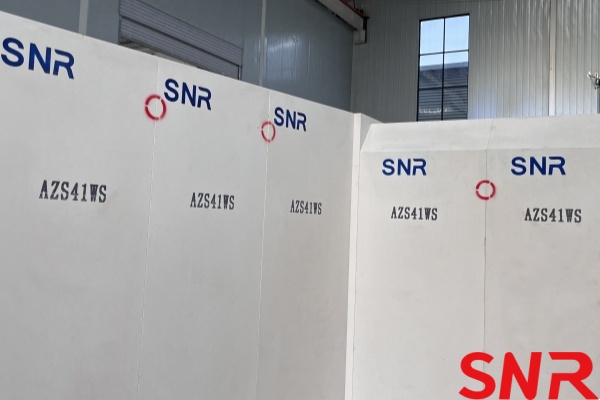

Fused cast AZS blocks possess outstanding refractory performance, capable of withstanding extreme high temperatures above 1790°C, maintaining structural stability in the continuous high-temperature environment of glass furnaces. Their load softening temperature is stable above 1550-1650°C, compressive strength can reach over 80MPa, and they also exhibit excellent thermal shock stability, capable of resisting thermal stress caused by sudden temperature changes, as well as erosion from high-temperature glass liquid and corrosive gases.
In glass furnaces, fused cast AZS blocks are mainly used in key parts such as the bottom, sidewalls, superstructure, and feeder channels. These areas are in direct contact with high-temperature glass liquid or are in a high-temperature, high-gas flow scouring environment. The excellent performance of fused cast AZS blocks can effectively resist erosion and scouring, ensuring the continuous and stable operation of the glass furnace, and improving glass product quality and production efficiency.
Sand mold manufacturing is a key process link in AZS block production, directly affecting the final product quality. The production process of fused cast AZS blocks includes: mixing raw materials such as alumina, zircon sand, and soda ash in precise proportions, feeding them into an electric arc furnace for melting, and then casting the high-temperature molten liquid into quartz-based sand molds for cooling and shaping. As precision molds, sand molds not only provide accurate shape and size for fused cast AZS blocks but also create suitable conditions for their solidification and crystallization. A structurally sound and stable sand mold can make the internal structure of the AZS block uniform and dense, further enhancing key properties such as strength and erosion resistance, ensuring the product meets industrial usage standards.
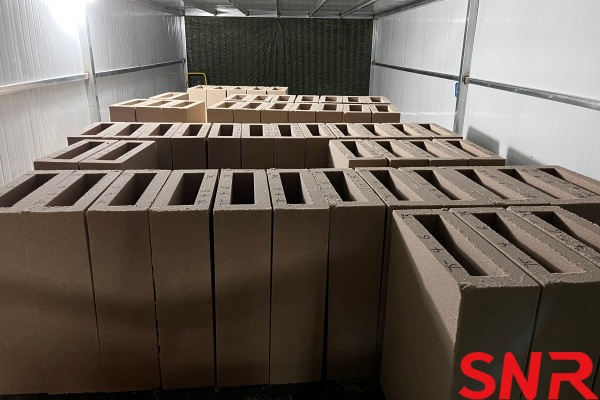
II. Technical Requirements for Sand Mold Manufacturing for AZS Block Casting
- Material Selection
The primary step in sand mold manufacturing is material selection, which is the foundation for ensuring sand mold performance. Quartz sand, as the main aggregate of the sand mold, directly affects the overall quality of the sand mold. High-quality quartz sand must meet the following technical indicators: SiO₂ content controlled between 97.5%-99.6% (±0.5% error allowed), sand grains with smooth surfaces and free of impurities, clay content below 0.2%-0.3%, angularity coefficient between 1.35-1.47, moisture content not exceeding 6%, and a reasonable particle size distribution with proper combination of coarse and fine particles.
The role of the binder is to firmly bond the quartz sand particles, giving the sand mold necessary strength. Commonly used binders include furan resin and water glass, each with its own characteristics: Furan resin contains furfuryl alcohol, offering advantages such as good fluidity, ease of compact molding, adjustable demolding time, and high strength after hardening. Sand molds prepared with furan resin cast fused cast AZS blocks with high dimensional accuracy, clear contours, smooth surfaces, and dense internal structure. However, it has high requirements for raw sand quality, produces irritating odors during molding and pouring, and has relatively high material costs.
Water glass (sodium silicate solution) can form a stable mold structure, has excellent collapsibility, and the sand mold is easy to break and clean after the casting cools; it also possesses good refractory properties, able to withstand the scouring and erosion of high-temperature metal liquid. However, the compressive and bending strength of sand molds prepared with it are relatively low, which may cause severe melting of silicon sand on the surface of the cast AZS block, resulting in uneven surfaces and affecting surface quality.
In actual production, the binder should be selected according to needs: if the AZS block requires extremely high dimensional accuracy and surface quality and the budget is sufficient, furan resin is preferred; if cost control is more important and the sand mold requires good collapsibility and refractoriness, then water glass is more suitable. Furthermore, the industry is exploring new composite binders, such as composite binders made by mixing epoxy resin, curing agent, high-alumina cement, and liquid aluminum dihydrogen phosphate in specific proportions, which can significantly improve the compressive and bending strength of the sand mold.
- Physical Performance Indicators
The physical performance of the sand mold is directly related to the smooth progress of the casting process and must meet strict requirements. Strength includes compressive strength and bending strength. Sufficient strength ensures that the sand mold does not collapse or deform during molding, handling, and closing, and can withstand the impact of high-temperature metal liquid during pouring. Sand molds prepared using new composite binders show significantly improved compressive and bending strength, and the cast fused cast AZS blocks have minimal surface protrusions, which can greatly reduce subsequent grinding workload.
Permeability is crucial for sand mold quality. After the high-temperature metal liquid is poured into the sand mold, the sand mold rapidly produces a large amount of gas. If these gases cannot be discharged smoothly, it will lead to defects such as porosity and misruns in the casting. The permeability of the sand mold is mainly affected by factors such as sand grain size, clay content, moisture content, and sand mold compactness.
Refractoriness is a core requirement for the sand mold. During fused cast AZS block casting, the metal liquid temperature is extremely high, and the sand mold must be able to withstand high-temperature thermal effects without softening or melting. Higher SiO₂ content and larger particles in the molding sand result in better refractoriness, enabling better resistance to erosion by high-temperature metal liquid.
Collapsibility should not be overlooked either. During the condensation process of the casting, its volume shrinks. If the sand mold does not have a certain degree of compressibility, it will hinder the shrinkage of the casting, leading to internal stress, and in severe cases, cracking. Usually, adding a small amount of additional materials like wood chips to the molding sand can effectively improve the collapsibility of the sand mold.
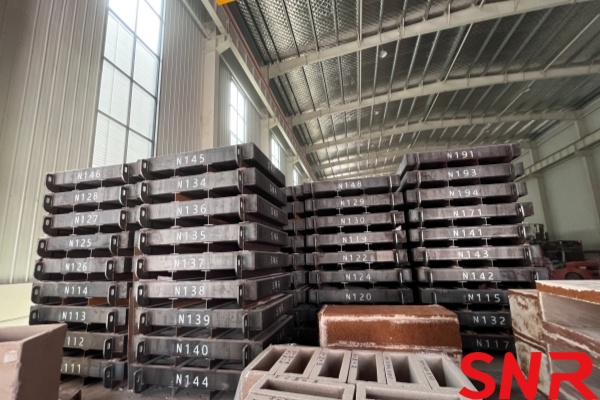
- Dimensional Accuracy and Surface Quality
Fused cast AZS blocks have strict requirements for dimensional matching during installation and use in equipment like glass furnaces, and must comply with relevant industrial standards. The dimensional accuracy of the sand mold directly determines the dimensional accuracy of the AZS block. The key to controlling sand mold dimensional deviation lies in the design and manufacturing of the pattern and core box. The pattern is the prototype of the sand mold, and its dimensions need to be based on the casting dimensions plus the shrinkage allowance (the metal liquid shrinks after cooling); the mold cavity is the space left in the sand mold after the pattern is removed, and its shape and size are basically consistent with the pattern. Therefore, patterns and core boxes must be precisely designed and processed to ensure the dimensional accuracy of the sand mold.
The surface quality of the sand mold also affects the finished product quality of the AZS block. A smooth and flat sand mold surface can result in a smooth surface on the cast AZS block, reducing surface defects such as sand inclusions and burrs. Measures to improve sand mold surface quality include: ensuring raw material quality (uniform quartz sand particle size, low clay content); adopting appropriate molding methods and processes; applying special coatings after the sand mold is made to improve the refractoriness, chemical stability, and surface smoothness of the mold cavity and core surfaces.
III. The Complete Process of Sand Mold Manufacturing for AZS Block Casting
- Preliminary Preparation
Preliminary preparation work is the foundation for the smooth progress of subsequent manufacturing processes, mainly including three core links: raw material preparation, mold design and manufacturing, and equipment debugging. Raw material preparation focuses on controlling quartz sand quality. Purchased quartz sand must strictly comply with standards: SiO₂ content within the range of 97.5%-99.6% (±0.5%), clay content less than 0.2%-0.3%, angularity coefficient between 1.35-1.47. After arriving at the factory, sampling inspection is conducted, using sieving method to detect particle size distribution and chemical analysis to verify chemical composition. Unqualified raw materials are not allowed into the warehouse for use.
Mold design and manufacturing need to fit the requirements of the AZS block. According to the specific shape, size, and accuracy requirements, computer-aided design (CAD) software is used for precise design to ensure accurate mold parameters. When selecting pattern materials, strength, stiffness, surface smoothness, and cost must be considered comprehensively. Metal patterns can be chosen for mass production, and wooden patterns for single-piece or small-batch production.
Equipment debugging is key to ensuring smooth production. The sand mixer is the core equipment for mixing molding sand. Before use, the wear of the mixing blades needs to be checked, and parameters such as rotation speed and mixing time need to be debugged. For molding equipment, manual molding tools need to be checked for integrity, and machine molding equipment needs to test the working status of compacting mechanisms, pattern drawing mechanisms, etc., to avoid equipment failures during production.
- Batching and Mixing
The batching ratio directly affects the performance of the molding sand and must be strictly executed according to the formula. Taking the commonly used furan resin sand mold as an example, the ratio of quartz sand to furan resin is usually 100:(0.5-2.0) (mass ratio). Precise measuring equipment, such as electronic scales, must be used during batching to ensure accurate weighing of each material and avoid deviations in performance such as sand mold strength and permeability due to ratio errors.
The mixing process must ensure uniform material mixing. Mechanical mixing methods are commonly used. The steps include: cleaning the inside of the sand mixer to prevent residual old sand or impurities from affecting the quality of the new sand; pouring the weighed quartz sand into the sand mixer and dry mixing for 1-2 minutes first to achieve uniform distribution of sand grains; adding furan resin and curing agent, and continuing mixing for 5-10 minutes until the resin and curing agent uniformly coat the surface of each quartz sand particle, forming stable performance molding sand.
To optimize the performance of the molding sand, a small amount of auxiliary materials can be added. For example, adding a small amount of coal powder improves the anti-burning-on properties of the sand mold, preventing adhesion between the high-temperature metal liquid and the sand mold; adding an appropriate amount of wood chips enhances the collapsibility of the sand mold, reducing internal stress and cracking risk during casting condensation.
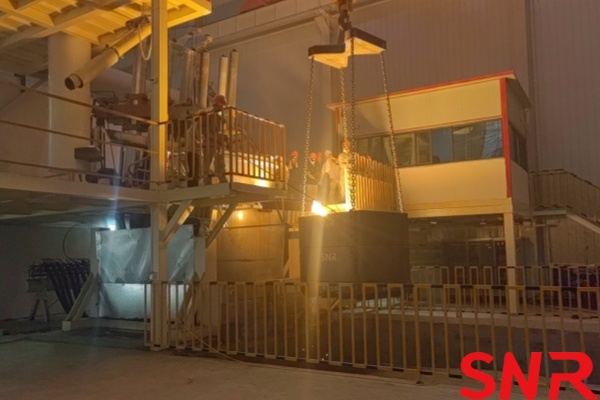
- Molding and Core Making
The molding process determines the shape and dimensional accuracy of the sand mold. There are mainly two methods: manual molding and machine molding. Manual molding is flexible, highly adaptable, has short pattern production preparation time, and does not require complex equipment, making it suitable for single-piece and small-batch production. For example, sweep molding uses a sweep board instead of a full pattern for molding, which is simple to operate and low cost, especially suitable for making sand molds for fused cast AZS blocks with simple shapes and large sizes.
Machine molding is the preferred choice for mass production, as it can significantly improve labor productivity, improve working conditions, and ensure consistency in sand mold dimensional accuracy and surface quality. Common machine molding methods include jolt-squeeze molding (compacting molding sand through vibration and pressure) and shoot-squeeze molding (using high pressure to shoot molding sand into the mold cavity for compaction), which can meet large-scale, high-standard production needs.
Core making is a key link in forming the internal cavity or local shape of the casting. The performance requirements for cores are higher than those for molding sand, requiring better strength, permeability, high-temperature resistance, collapsibility, and break down ability. Core making methods are divided into manual core making and machine core making. Machine core making commonly uses processes such as hot box core making and cold box core making, which have high production efficiency and more stable core quality.
- Drying and Curing
The core purpose of drying and curing is to remove moisture from the sand mold and improve the strength and dimensional stability of the sand mold. The treatment methods for sand molds with different binders are slightly different. For sand molds using water glass as the binder, the drying process is also the process of water glass dehydration and curing. Drying methods include natural drying (low cost but time-consuming, greatly affected by the environment), steam drying (relatively efficient, uniform temperature), and electric heating drying (precise temperature control, suitable for high-standard production). Drying process parameters need to be strictly controlled: the drying temperature for quartz sand molds is between 150-250°C, and the drying time is adjusted according to the size, thickness of the sand mold, and the performance of the drying equipment. Small sand molds are dried for 2-4 hours, while large, thick-walled sand molds may require 6-8 hours to ensure complete removal of internal moisture.
For sand molds with organic binders such as furan resin, the curing process is equally important. The amount of curing agent added and the curing time directly affect the curing effect of the sand mold. The amount of curing agent for furan resin sand molds is usually 20%-50% of the resin amount, and the curing time is adjusted according to the ambient temperature. During the curing process, it is necessary to ensure good environmental ventilation to promptly discharge the gases generated during curing and avoid gas residue affecting sand mold quality.
- Assembly and Coating
Sand mold assembly is the process of combining various components into a complete mold. The key lies in accurate positioning and firm fixation. During assembly, it is necessary to ensure that all parts of the sand mold are aligned and the dimensional accuracy meets the requirements; if the sand mold includes cores, the cores must be placed accurately to ensure their position and verticality, avoiding internal structure deviation of the casting after pouring.
Spraying a coating on the inner wall of the sand mold is an important step to enhance performance. Zirconia-based coatings are commonly used with significant effects. Zirconia-based coatings have excellent refractoriness, chemical stability, and resistance to metal liquid scouring, which can effectively protect the sand mold surface from erosion by high-temperature metal liquid while improving the surface quality of the AZS block. The spraying process must be strictly controlled: the coating ratio must be precise, the spraying pressure is controlled between 0.3-0.5MPa, and the spraying thickness is generally 0.5-1.5mm, ensuring the coating uniformly covers the inner wall of the sand mold.
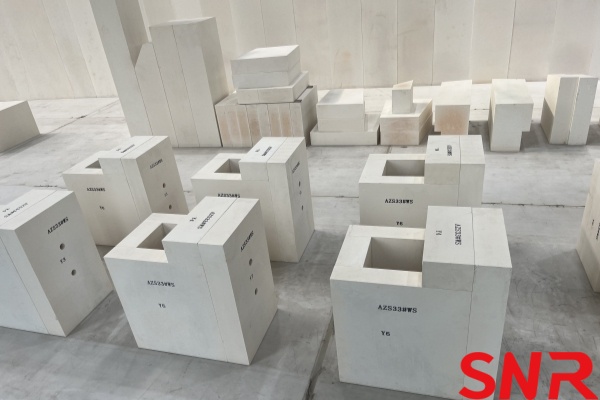

IV. Factors Affecting the Quality of AZS Block Casting Sand Molds
- Raw Material Quality
Raw material quality is the foundation of sand mold quality. Any problem with any raw material will directly affect sand mold performance. Quartz sand, as the main aggregate, has the most significant impact when its quality fluctuates. If the SiO₂ content of quartz sand is below 97.5%, the refractoriness significantly decreases, making it prone to softening and melting during casting, leading to surface defects on the casting; if the clay content exceeds 0.3%, it will block the gaps between sand grains, reducing sand mold permeability and strength, potentially causing defects such as porosity and sand inclusions in the casting.
Binder quality is also crucial. Taking furan resin as an example, if its furfuryl alcohol content is insufficient, it will lead to poor resin fluidity, preventing it from uniformly coating quartz sand particles, affecting sand mold strength and collapsibility; if the modulus (molar ratio of silica to sodium oxide) and density of water glass do not meet requirements, its bonding performance will change, leading to insufficient sand mold strength or abnormal curing speed.
Methods to control raw material quality include: strictly screening suppliers, choosing manufacturers with good reputation and stable quality; establishing a sound raw material inspection system, sampling and testing each batch of raw materials upon arrival at the factory; paying attention to environmental control during storage, such as storing quartz sand in a dry and ventilated place to prevent moisture and caking, and sealing binders to avoid deterioration.
- Manufacturing Process Parameters
Various process parameters during the manufacturing process significantly affect sand mold quality. Any improper control of parameters may lead to quality problems. In terms of sand mixing parameters, mixing time, temperature, and humidity are core. If the mixing time is too short, quartz sand and the binder cannot be fully mixed, resulting in uneven performance of the molding sand; if the mixing time is too long, it may cause the binder to react prematurely and become ineffective. If the mixing temperature is too high, resin-based binders may cure prematurely; if the temperature is too low, the binder has poor fluidity, resulting in poor mixing effect. The humidity of the mixing environment is generally controlled between 50%-70%.
Among molding parameters, molding pressure and speed are crucial. If the molding pressure is too high, the sand mold becomes too compact, permeability deteriorates, and gas cannot be discharged; if the pressure is too low, the sand mold compactness is insufficient, strength is inadequate, and it is prone to deformation or collapse. If the molding speed is too fast, it may lead to inconsistent compactness in different parts of the sand mold, with local looseness; if the speed is too slow, production efficiency is low, and it may also affect the fluidity of the molding sand.
The control of drying parameters cannot be ignored either. If the drying temperature is too high, the sand mold surface may scorch or crack; if the temperature is too low, moisture cannot be completely removed, and the sand mold strength is insufficient. If the drying time is too long, it may cause the sand mold to become overly dry and brittle; if the time is too short, moisture remains, easily causing porosity during casting.
- Operator Skill and Responsibility
Operators are the core of process execution. Their skill level and sense of responsibility directly affect sand mold quality. In terms of skill level, the batching stage requires proficiency in using measuring equipment to accurately weigh raw materials; the sand mixing stage requires mastering the operation skills of the sand mixer and controlling the mixing time and speed well; the molding and core making stages have higher skill requirements. During manual molding, the operator‘s technique and strength directly affect the compactness and surface quality of the sand mold. Machine operation requires familiarity with equipment parameter settings and the ability to respond to production abnormalities promptly. Responsibility is equally important. If operators lack a sense of responsibility, they may simplify processes, such as not following the formula for batching, shortening mixing time, or not meeting drying temperature standards. These operational errors may lead to unqualified sand mold quality, thereby affecting the performance of fused cast AZS blocks. Therefore, enterprises need to strengthen employee training, improving skill levels while reinforcing responsibility education.
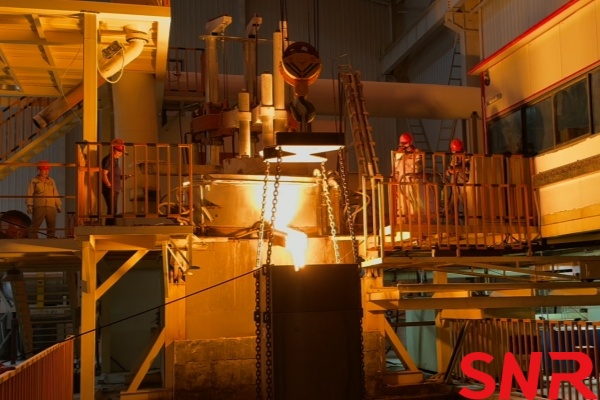
V. Innovation and Development Trends in Sand Mold Manufacturing Technology for Fused Cast AZS Block Casting
- Exploration and Application of New Materials
The research, development, and application of new materials are important directions for improving sand mold performance. Currently, there have been many breakthrough progress in the industry. The development of high-performance binders has achieved significant results. Some new inorganic binders, through optimized chemical composition and microstructure, perform far beyond traditional binders. For example, new phosphate binders not only have high strength and good refractoriness but are also environmentally friendly and pollution-free, with good collapsibility, solving some of the shortcomings of traditional binders.
The application of special sands has opened up new paths. Mullite-based special sand is a typical representative. Its main crystal phases are mullite and corundum, possessing extremely high refractoriness (able to withstand temperatures above 1800°C), low thermal expansion coefficient (good thermal stability), and excellent thermochemical stability. Sand molds made with this special sand undergo minimal thermal deformation during the fused cast AZS block casting process, accurately ensuring the dimensional accuracy of the fused cast AZS block, while also reducing pollution of the casting by the sand mold.
- Integration and Development of Advanced Technologies
With technological progress, more and more advanced technologies are being integrated into the field of sand mold manufacturing, driving the industry towards efficient and precise development. 3D printing technology has brought revolutionary changes. By using digital design models and 3D printing equipment to print sand molds layer by layer, traditional mold making is not required. This not only significantly shortens the sand mold manufacturing cycle (for example, the production time for complex sand molds is reduced from several days to a few hours) but also enables the precise manufacturing of complex structure sand molds, especially suitable for customized and small-batch production.
Automation control technology has enhanced production stability. In various links such as batching, mixing, molding, and drying, installing automation control systems can accurately control process parameters, such as automatic weighing during batching, automatic control of time and speed during sand mixing, and automatic adjustment of temperature and time during drying, avoiding human operational errors, improving product quality consistency, and simultaneously enhancing production efficiency.
Intelligent monitoring technology enables full-process quality control. By installing various sensors on sand mold manufacturing equipment, parameters such as sand mold temperature, humidity, strength, and permeability are monitored in real-time. Once parameter abnormalities are found, the system will alarm and adjust promptly, and can even predict equipment failures for proactive maintenance, reducing production losses.
- Sand Mold Manufacturing under the Concept of Green Environmental Protection
Against the backdrop of increasingly strict environmental protection requirements, sand mold manufacturing processes are transitioning towards energy saving, emission reduction, and resource recycling. In terms of energy saving and emission reduction, the application of new drying technologies has shown significant results. Microwave drying and vacuum drying are currently the focus of promotion. Microwave drying utilizes the thermal effect of microwaves to quickly and uniformly heat the interior of the sand mold, causing rapid evaporation of water. The drying efficiency is 3-5 times higher than traditional methods, and energy consumption is reduced by over 40%. Vacuum drying is carried out in a low-pressure environment where the boiling point of water is lowered, allowing for lower drying temperatures, which can reduce sand mold deformation while saving energy.
Resource recycling has become an industry consensus. Waste sand molds can be reused after treatment. Treatment methods mainly include physical methods (crushing, screening, magnetic separation to remove impurities and metal particles) and chemical methods (using chemical agents to remove residual binders). The performance of the regenerated sand after treatment is close to that of new sand and can be used to make medium and low-grade sand molds. This not only reduces raw material costs but also reduces solid waste emissions, meeting the requirements of sustainable development.
VI. Summary and Outlook
The manufacturing technology of sand molds for fused cast AZS block casting is a complex and precise system, where every link directly affects the final quality of the fused cast AZS block. From a technical requirement perspective, material selection is the foundation; high-quality quartz sand and compatible binders determine the core performance of the sand mold; physical performance indicators (strength, permeability, refractoriness, collapsibility) are the guarantee for the normal operation of the sand mold; dimensional accuracy and surface quality are directly related to whether the fused cast AZS block can meet industrial usage requirements.
From the perspective of the complete manufacturing process, preliminary preparation work lays the foundation for subsequent production; batching and mixing ensure that the molding sand performance meets standards; molding and core making determine the shape and accuracy of the sand mold; drying and curing enhance the strength and stability of the sand mold; assembly and coating further optimize the performance of the sand mold. Each step is indispensable.
Currently, sand mold manufacturing still faces some challenges: fluctuations in raw material quality are difficult to fully control, precise regulation of manufacturing process parameters is challenging, and operator skill levels are uneven. As market requirements for fused cast AZS block quality and performance continue to increase, and environmental pressure grows, innovation and upgrading of sand mold manufacturing technology are urgently needed.
Looking to the future, sand mold manufacturing technology has broad development prospects. The continuous research, development, and application of new materials will continuously optimize sand mold performance and enhance the quality of Fused cast AZS blocks; the deep integration of advanced technologies such as 3D printing, automation control, and intelligent monitoring will drive sand mold manufacturing towards intelligent, precise, and efficient development; the promotion and application of green environmental protection technologies will achieve energy saving, emission reduction, and resource recycling in sand mold manufacturing, making industry development more aligned with the requirements of sustainable development.
Henan SNR Refractory Co., Ltd. is dedicated to the manufacture, research and development of fused cast AZS refractory blocks and bonded refractory materials for the glass industry. Meanwhile, SNR can provide total solutions and services for glass furnace design, glass furnace construction, renovation, and upgrading. Please contact me if you have any requirements.
zoe@snrefractory.com/ WhatsApp:+86 15670323812




